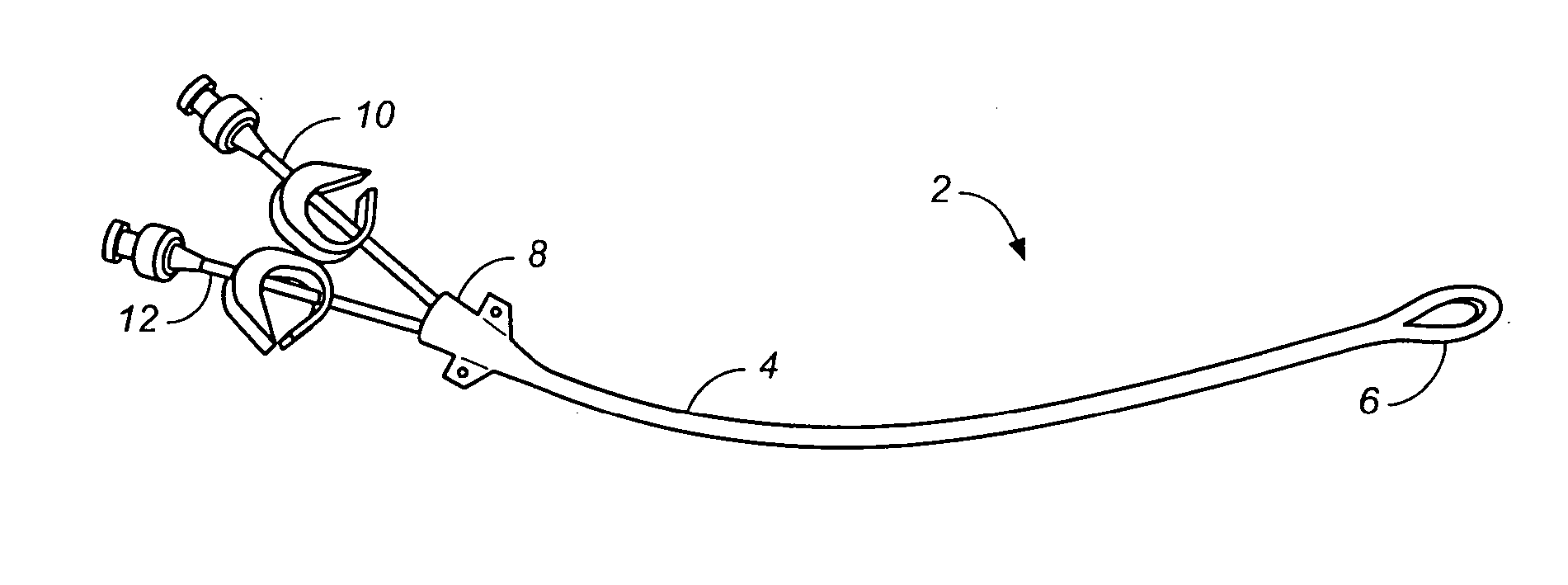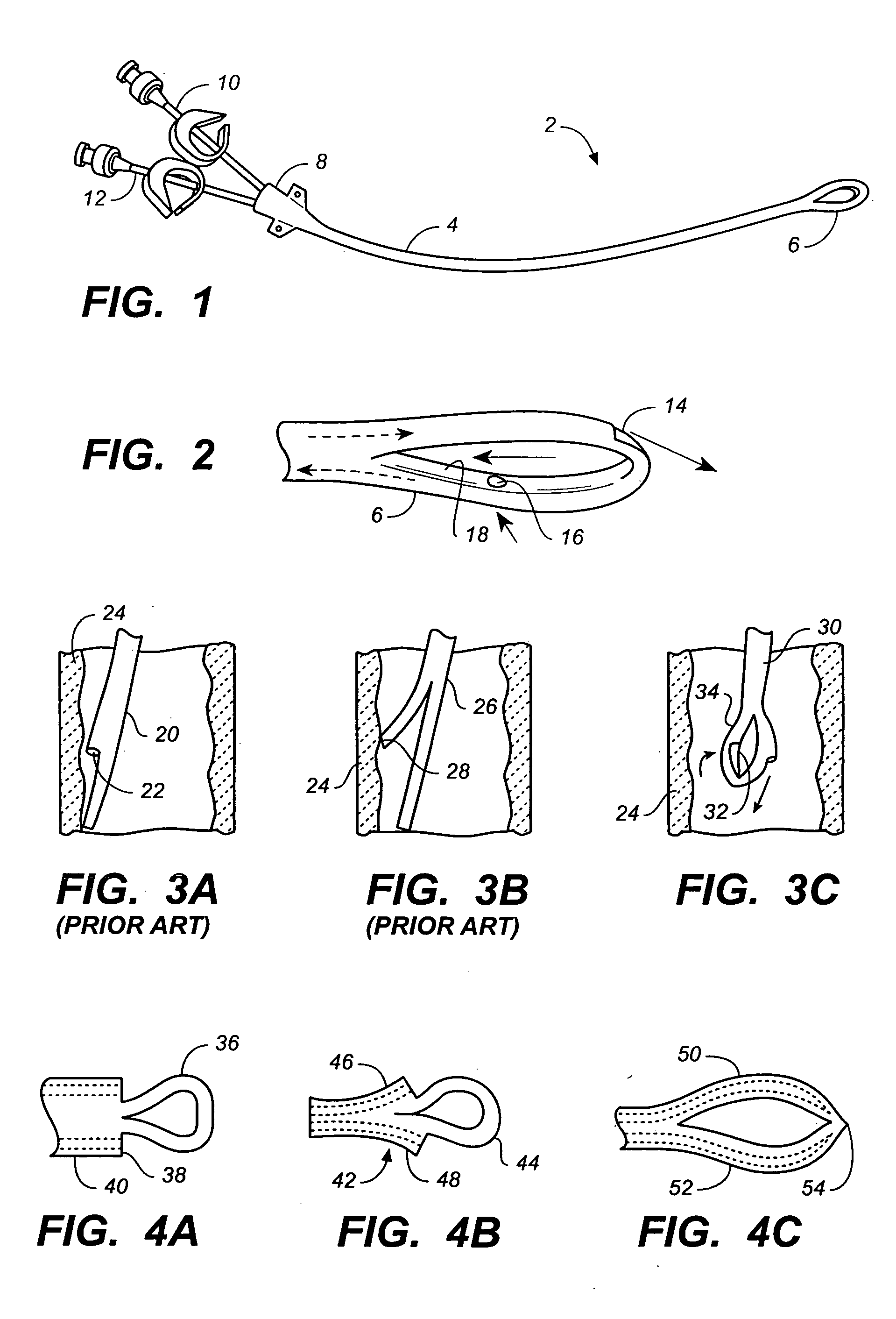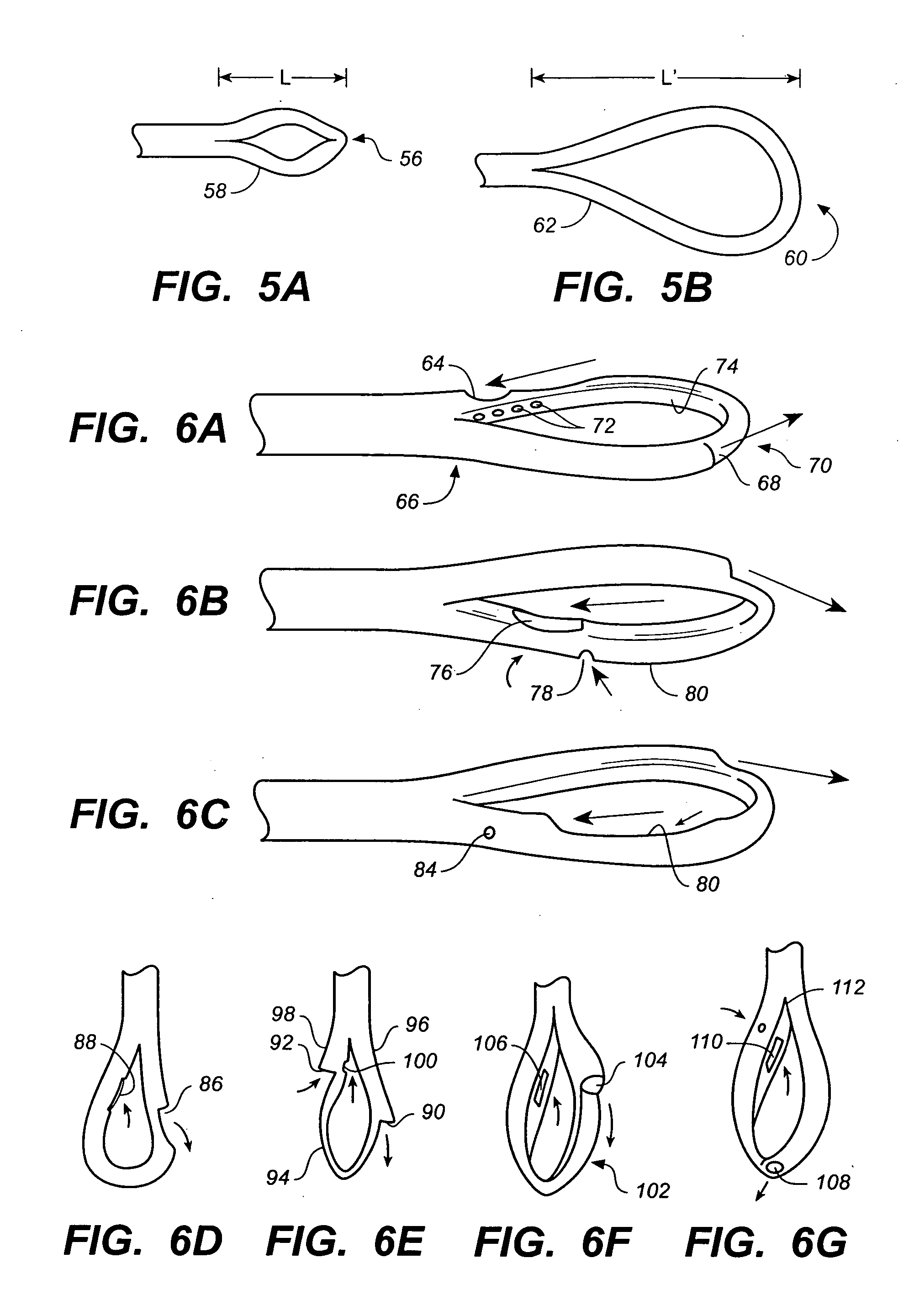Loop-tip catheter
a catheter and loop-tip technology, applied in the field of multi-lumen catheters, can solve the problems of blood clotting, loss of catheter function, and lower the efficiency of a dialysis procedure, and achieve the effects of preventing arterial suction, maximizing flow performance, and preventing fibrin formation
- Summary
- Abstract
- Description
- Claims
- Application Information
AI Technical Summary
Benefits of technology
Problems solved by technology
Method used
Image
Examples
Embodiment Construction
in conjunction with the accompanying drawings that are first briefly described.
BRIEF DESCRIPTION OF THE DRAWINGS
[0013]FIG. 1 illustrates one variation of a dual lumen loop-tip catheter.
[0014]FIG. 2 is an expanded view of the distal portion of the loop-tip catheter of FIG. 1. The arrows illustrate the direction of fluid flow for one possible application, where the catheter is utilized for hemodialysis.
[0015]FIG. 3A illustrates a typical hemodialysis catheter with staggered lumen openings suctioning against the wall of a blood vessel.
[0016]FIG. 3B illustrates a typical slip-tip hemodialysis catheter suctioning against the wall of a blood vessel.
[0017]FIG. 3C illustrates one variation of a loop-tip catheter utilized in a blood vessel for hemodialysis application. The loop structure prevents the arterial inlet from suctioning against the vessel wall.
[0018]FIGS. 4A-4B illustrates various examples of loop-tip configurations. In FIG. 4A one variation including a loop extending distal...
PUM
| Property | Measurement | Unit |
|---|---|---|
| wall thickness | aaaaa | aaaaa |
| inner diameter | aaaaa | aaaaa |
| inner diameter | aaaaa | aaaaa |
Abstract
Description
Claims
Application Information
 Login to View More
Login to View More - R&D
- Intellectual Property
- Life Sciences
- Materials
- Tech Scout
- Unparalleled Data Quality
- Higher Quality Content
- 60% Fewer Hallucinations
Browse by: Latest US Patents, China's latest patents, Technical Efficacy Thesaurus, Application Domain, Technology Topic, Popular Technical Reports.
© 2025 PatSnap. All rights reserved.Legal|Privacy policy|Modern Slavery Act Transparency Statement|Sitemap|About US| Contact US: help@patsnap.com



